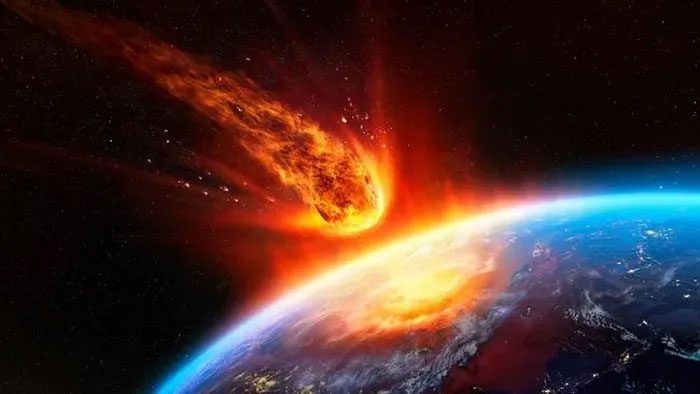If an asteroid is discovered hurtling towards Earth, the planet’s safety would be ensured by launching multiple spacecraft (sometimes numbering in the thousands) simultaneously to alter the asteroid’s trajectory.
This apocalyptic scenario is unlikely to happen. Astronomers have mapped the orbits of over 33,000 near-Earth asteroids, and for at least the next 100 years, none pose any collision risk.
However, scientists understand that disasters can occur without warning. Thousands of asteroids move hidden beneath the bright sunlight, including many large enough to wipe out entire cities.
The European Space Agency (ESA) warns that dozens of “killer” asteroids (those with diameters greater than 1 km and capable of causing global extinction events) remain undiscovered in our Solar System.
Brent Barbee, an aerospace engineer at NASA’s Goddard Space Flight Center and a professor of aerospace engineering at the University of Maryland, states that, for this reason, space agencies take the apocalyptic scenario very seriously. After years of research—including the world’s first mission to deflect a real asteroid in space—the international community’s efforts have yielded two feasible methods to change the trajectory of dangerous asteroids.

Illustration of an asteroid hurtling towards Earth. (Photo: NASA Goddard).
Kinetic Impact
Currently, the only proven method to deflect an asteroid is through kinetic impact. Barbee explains, “A kinetic impactor is a spacecraft that crashes into an asteroid at high speed and transfers its momentum to the asteroid. However, the material ejected from the asteroid at the impact point can provide additional momentum change for the asteroid, pushing it a little harder.”
NASA has tested the kinetic impact method with the Double Asteroid Redirection Test (DART), a recent mission costing $325 million that deliberately crashed a speeding spacecraft into Dimorphos, a 177-meter-wide asteroid, in September 2022.
Dimorphos does not pose any threat to Earth but became a primary target due to its size and its orbit around a larger companion asteroid, Didymos.
After the successful collision on September 26 last year, Dimorphos’s orbit around Didymos slowed down by 33 minutes—resulting from the impact and the massive dust cloud ejected from the asteroid’s surface. This was humanity’s first and only successful attempt so far to change the trajectory of an asteroid.
However, Barbee notes that the kinetic impact method has its drawbacks. Notably, the larger the target asteroid, the more kinetic impacts are required to deflect it. For instance, to deflect an asteroid about 610 meters wide—roughly three times the size of Dimorphos—scientists would need to simultaneously launch between 39 and 85 Falcon Heavy rockets carrying kinetic impactors.
To deflect an asteroid 1.5 km wide, we would need to launch between 565 and 1,266 kinetic impactors simultaneously, depending on which part of Earth the asteroid is preparing to strike.
Nuclear Bomb Launch
Barbee states that “the best option” currently for deflecting a large asteroid is to launch a nuclear bomb at it.
He adds: “According to our analysis, a suitably sized nuclear explosive has been found capable of deflecting even a 1.5 km-sized asteroid.”
Barbee explains that, similar to NASA’s OSIRIS-REx spacecraft, which interacted with the asteroid Bennu from December 2018 to October 2020, an ideal location for a nuclear explosion would be several hundred meters away from the asteroid.
The nuclear radiation would penetrate and vaporize a thin layer on the asteroid’s surface. Then, like a kinetic impactor, the vaporized material would be ejected from the asteroid, causing the asteroid to be pushed away. If positioned correctly, the explosion would knock the “planet killer” off its collision course with Earth.
However, this method currently only exists in simulations based on data from terrestrial explosions.
Time is of the Essence
The biggest challenge for both methods above is time. Astronomers received a warning 15 years before a hypothetical asteroid was projected to collide with Earth. This allowed them ample time to plan a launch. If an asteroid is detected just one or two years prior to impact, it would be dire and difficult to change course.
Barbee states: “The typical development time for an interplanetary mission is about 5 years. Given the current situation, achieving success in one year would be very difficult and a significant challenge.”
Barbee emphasizes: “The impact of an asteroid is one of the few natural disasters that we have enough means to foresee and prevent. Therefore, we are trying to be as prepared as possible.”


















































